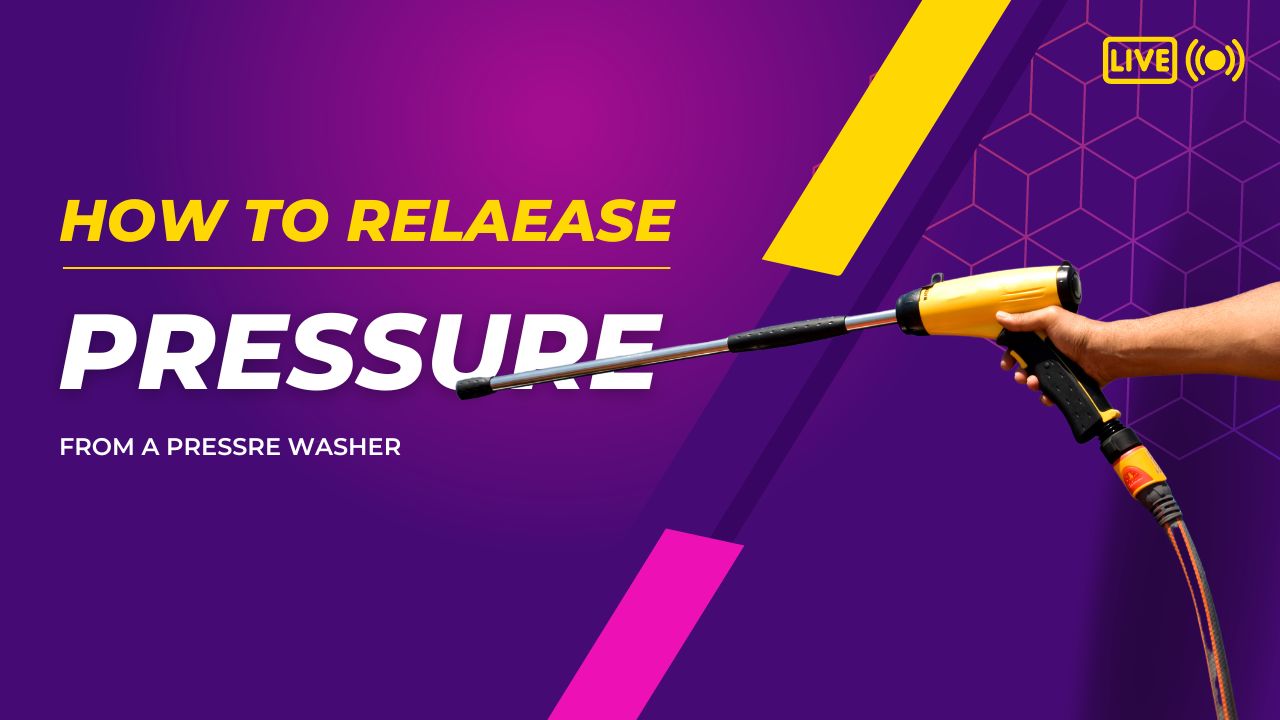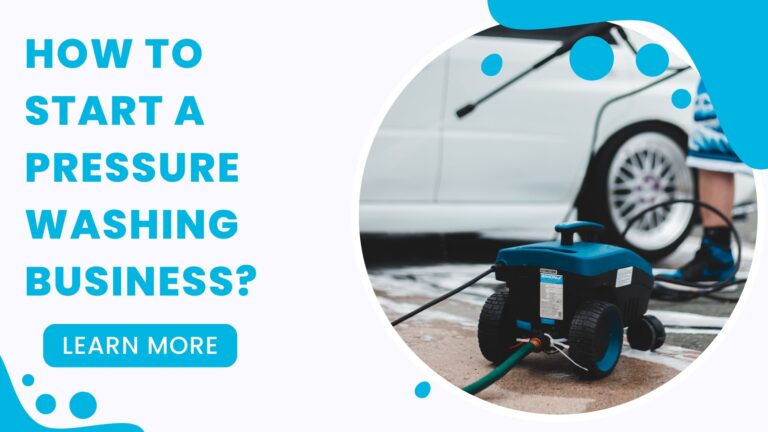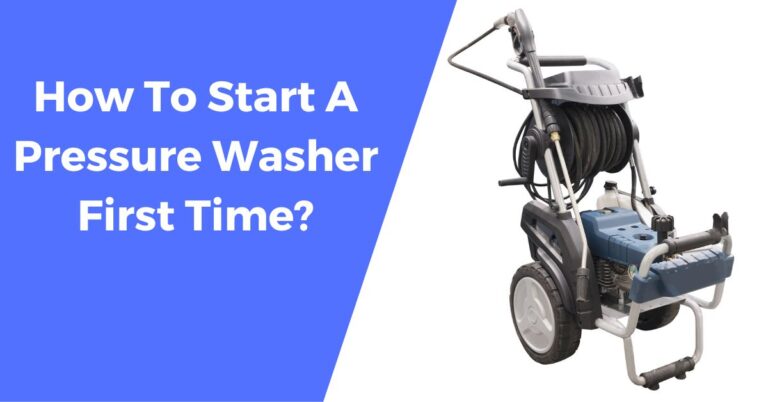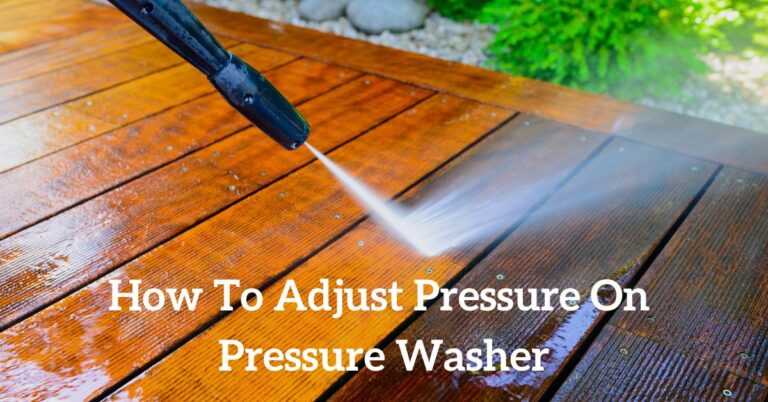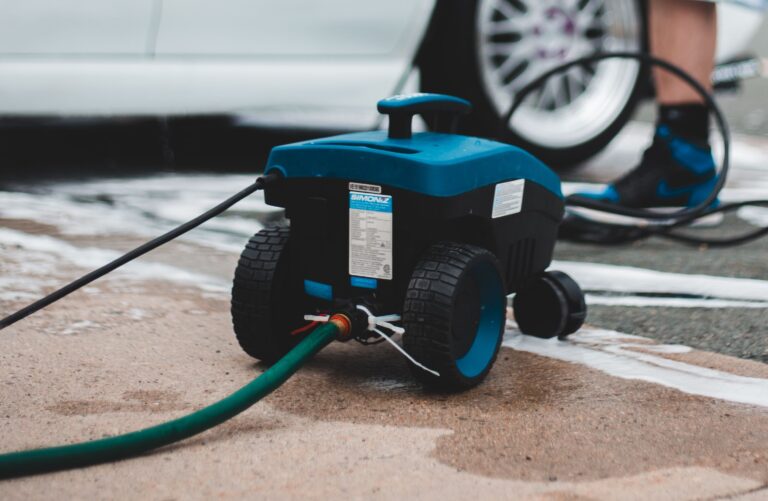How To Release Pressure From A Pressure Washer?
It feels almost instinctive not to let pressure build inside any system.
And it would be best if you trust your instincts in the case of a pressure washer, as it can sometimes be even more harmful. High pressure left inside the pressure washer can cause leakage, breakage, or, worst case, BOOM!
Don’t worry, though! We will tell you exactly how to release pressure from a pressure washer. It is quick, simple, and absolutely child’s play, which means you can do it even if you are a newbie. That, too, within a matter of seconds. We will also tell you several alternatives if your pressure washer won’t release pressure. So, read on ahead to find out how.
What Does It Mean To Have High Pressure On A Pressure Washer?
One of the significant purposes, without which a pressure washer wouldn’t be a “pressure washer,” is to supply water with a bit of force. This force, or high speed, makes removing even the most stubborn dirt easier. We get this high-speed water as a result of increased pressure. And do you know how we get this high pressure?
That’s right. The pump creates this pressure – forcing the water through the nozzle with a high flow rate.
How Does Pressure Get Built-Up Inside A Pressure Washer?
We can control the flow rate (pressure value) on a pressure washer, which depends on the pressure washer specs, including the pump type, size, speed, flow rate, and the engine’s power output. The greater the specs and the engine’s power output, the higher the pressure can be generated.
But what happens when the engine is turned on and you aren’t using the pressure washer? Or when your pump generates more pressure than what’s allowed to exit at the nozzle tip? Well, that’s precisely what leads to pressure buildup inside the system.
Why Do You Need To Release Pressure From a Pressure Washer?
When the pressure gets built inside the system, a pressure washer release valve is usually activated to release the excess pressure.
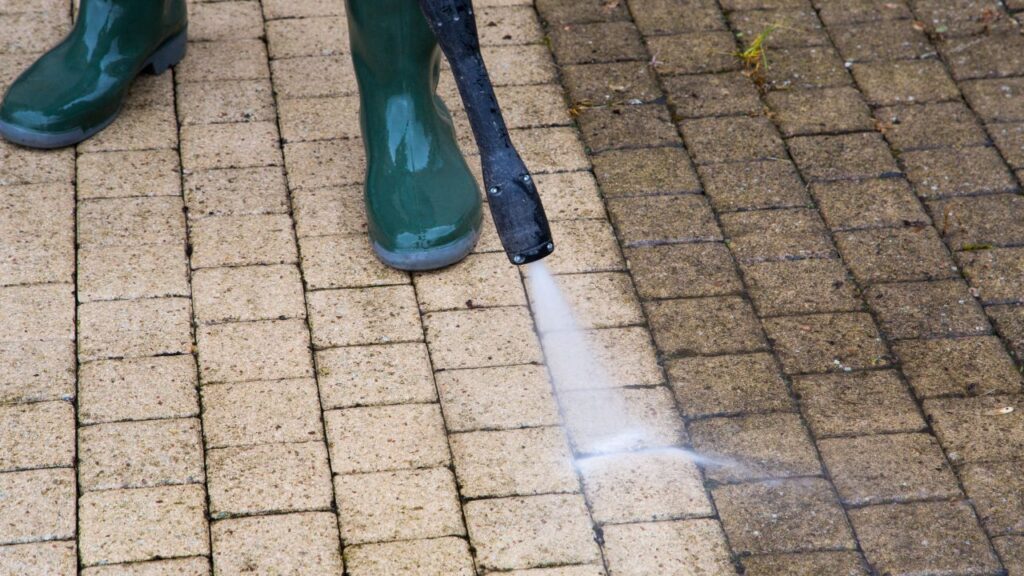
Remember when you drenched yourself when your pressure washer spewed water everywhere? Yeah, that was a case of high water pressure that just made it out of the pressure washer.
You were lucky as the pressure successfully made its way out of the system, with just you getting wet. Here are some other reasons you should release pressure from a pressure washer.
To prevent damage
High pressure inside the system acts on any walls (of the tubing) enclosing that pressure. When the pressure finds no exit, it will exit through these walls. Thereby cracking or developing leaks that can damage the pump, hoses, tubes, etc.
To make it last
When you release the pressure from the system, you reduce wear and tear and prolong the pressure washer’s life. And we all know that once even a tiny part of the pressure washer gets damaged, its repair is rarely cheaper than the cost of a new one.
To remove blockages
When depressurizing, you remove blockages in the pressure washer tubes due to dust, dirt, or trapped air. By eliminating these blockages, you ensure the system works optimally and delivers its design pressure.
To avoid rusting
By not releasing pressure from your pressure washer, you are exposing it to the formation of rust on the pump, machine, and overall structure. Rust can damage the components and lead to the machine’s deterioration before it reaches its life expectancy.
Keeping the warranty
Warranties can easily be voided when some suppliers detect the slightest hint of neglect in machine care. And not releasing pressure from the system might be why they need to void your warranty. So, protect your warranty by appropriately removing pressure from your pressure washer.
How to release pressure from a pressure washer?
We get it. You don’t want to get drenched again just so you can release pressure from the pressure washer, right? So, here are some ways to release pressure without being soaked like laundry.
Use The Pressure Release Valve AKA Unloader Valve
Modern pressure washers come with measures that prevent pressure from building up inside the system. And pressure washer release valve is one of the most famous such measures. It is sometimes also referred to as the unloader valve, and here’s how you can use it to rid the system of excess pressure:
Locate the pressure release valve
It is usually placed near the pump and has a knob or a lever that you can turn to release pressure.
Turn the release valve
Put the release valve into the “release” position – it should be marked on the knob or lever. By doing this, you are allowing the pressure to release from the pump and reducing the overall pressure of the system. (You are done at this point in releasing pressure from your pressure washer.)
How to resume your work
After releasing the pressure, turn the lever back to the “off” position. Otherwise, you will never have enough water pressure for pressure washing.
Gauge up the release valve
It isn’t necessary to always rely on your instincts while using the pressure washer release valve. If you frequently use the release valve, consider using a pressure gauge to get accurate pressure values every time.
Using a release valve is as simple as that, but sometimes there may be pressure washer unloader valve symptoms, indicating that it isn’t working correctly. You’ll get less output pressure, lower water flow, or both when that happens. It is time for the unloader valve to be replaced/repaired. Meanwhile, you can also use these alternative ways to release pressure from your pressure washer.
A Few Other Ways To Release Pressure From Pressure Washer
Use A PRD – Pressure Relief Device
PRDs are safety devices activated automatically when pressure exceeds a maximum value to prevent rupture, leakages, or any other damage due to excess pressure. These are generally installed on the pump and sometimes on the hoses.
Power off your pressure washer
This may be the easiest way to prevent any further buildup of pressure. However, it doesn’t necessarily mean the excess pressure will immediately exit the system when the pressure washer is powered off.
Drain the hose
It would be best to do this regularly after every use, as this creates openings for excess pressure to escape into the atmosphere. It also removes water from the pressure washer and hoses, which, when left inside, could cause rust and erosion.
Use low-pressure setting
It’s always better to be extra safe when working with any machine. Besides, not running the engine at its maximum capacity and not pushing it to its limit for extended durations will also ensure that it lasts a long time.
FAQs
Where is the pressure washer unloader valve?
The pressure washer unloader valve is located near the pump. You can identify it by looking for a lever or a knob, as these will enable you to release the pressure from the system by turning them into the “release” position.
How do you bleed a pressure washer?
You can bleed the pressure washer by connecting your garden hose to the pressure washer. Ensure the machine is powered off, and turn the garden faucet to allow water flow through the pressure washer. Let the water flow briefly to remove any trapped air from the system. Disconnect your spray wand hose for best results. This process of removing trapped air is known as bleeding the pressure washer.
How does the unloader valve work on a pressure washer?
The unloader diverts the excess pressure (when the pressure washer is not in use) from the outlet side of the pump back to the inlet side. This causes the water to flow back in a loop, preventing dangerous pressure buildup. The water can also be redirected to the reservoir on the machine.
How do you remove a pressure washer unloader valve?
You will need a screwdriver and a rubber mallet to remove the pressure washer and unloader valve. Start by locating the unloader valve. Then, with the help of the screwdriver, pry off the pin securing the unloader valve to the manifold.
Finally, insert the screwdriver between the unloader valve coils; use the manifold to pop out the unloader valve as a fulcrum. The rubber mallet is just there to un-stuck the unloader valve by gently tapping it with the mallet to remove any deposited dust or debris.
Final Thoughts
Releasing pressure from the pressure washer is necessary to ensure your machine lasts a long and healthy life. And, of course, it doesn’t drench you every so often.
The pressure washer unloader valve is one of the most popular ways of removing excess pressure from the system. You can also try bleeding your pressure washer by powering it off and letting the water flow for about a minute.
It’s a good habit to provide the best care to your machines, especially when they make our lives much easier and more convenient. Remember to take proper safety precautions and consult the pressure washer’s manual before proceeding with any new steps.

